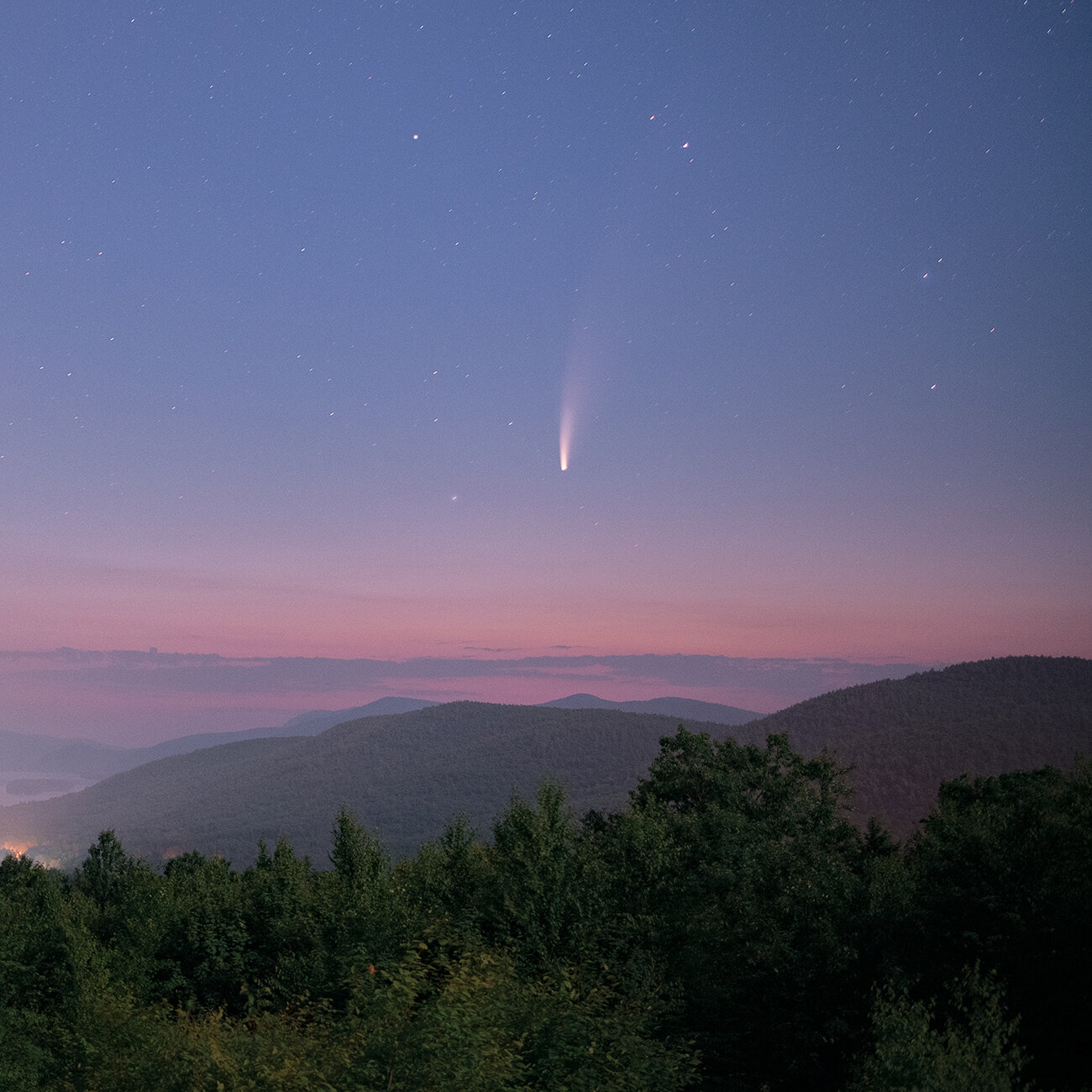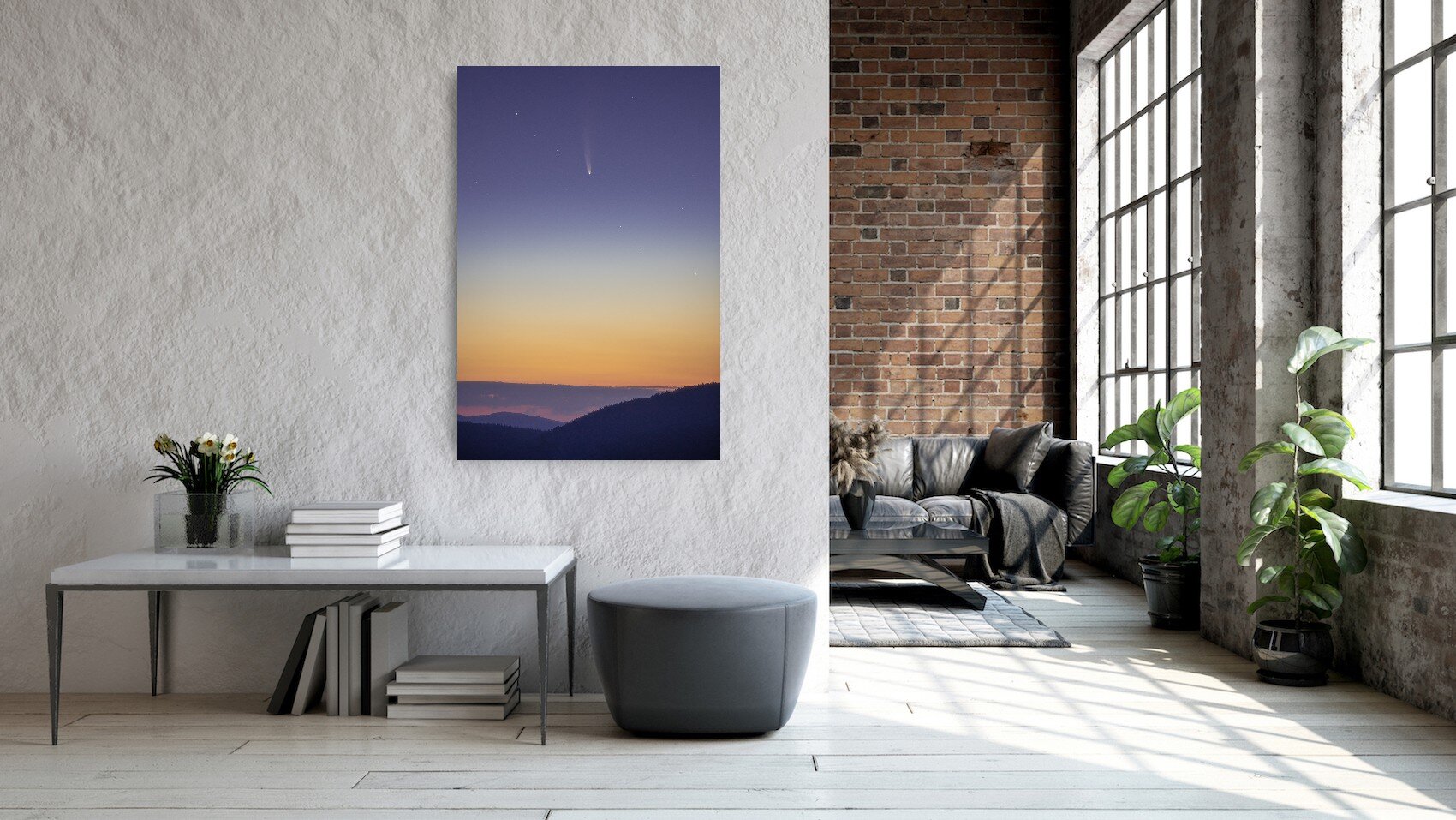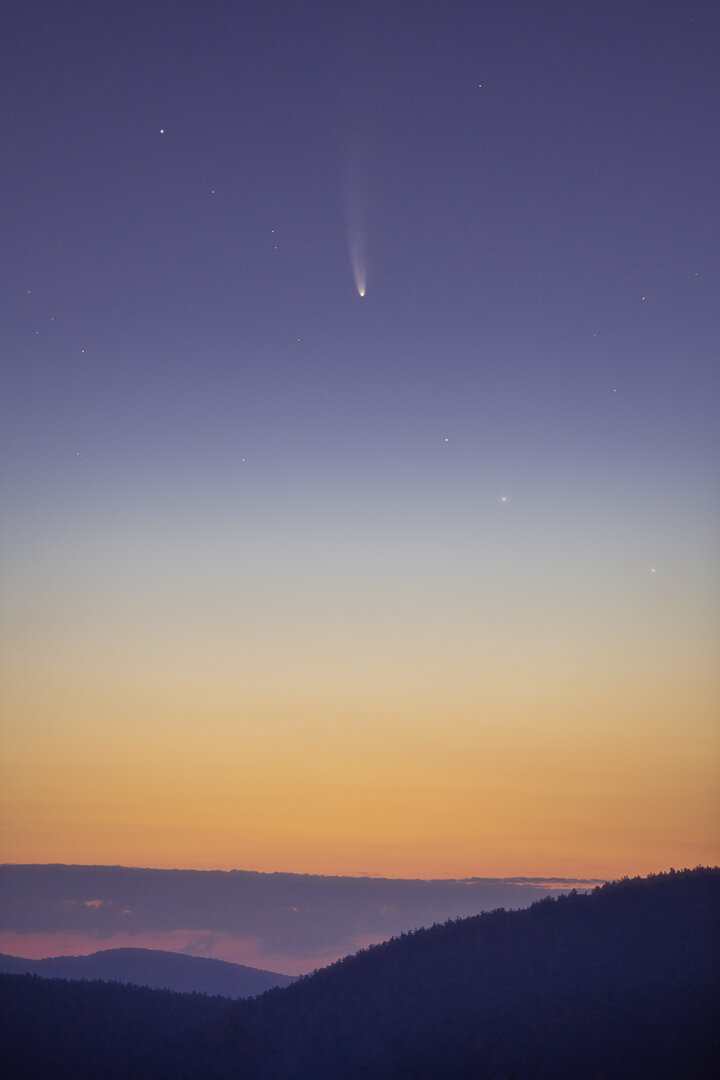Viewing & Photographing Comet Neowise (C/2020 F3)
Every few decades we are graced with a new near Earth object that captures our imagination. In the late 1990s it was Hale Bopp, arguably one of the most beautiful comets seen to date. This year we have been blessed with the arrival of Comet Neowise which is technically called “Comet C/2020 F3 NEOWISE” as it was first identified by the NEOWISE satellite. Regardless, its a stunning comet and well worth the effort to view it!
Comet Neowise will most likely be visible for the rest of July in the Northern Hemisphere. After that it will most likely fade as it moves further and further away from the Sun in its long 6,766 year orbit. As of July 11, 2020 the comet is best viewed in the early morning hours starting at approximately 2:30 AM. Too early for you? The good news is that the comet should be visible in the early evening sky this month, too!
Best Advice for Viewing:
Find a location with a clear view to the Northeast (NE) where you are as far away from bright lights as possible. The darker the location, the better. If finding a dark location is not possible, no worries its been a highly visible comet and you should be fine. Light pollution from cities and towns degrades our viewing of the night sky. Be safe outside and make sure you have a flashlight. The Moon is now in its waning phase and will be less of a presence at night the rest of July. If you have a pair of binoculars, great! You can get a amazing view of the comet with binoculars. If not, no problem as the Comet Neowise is very much visible right now with the unaided eye. And again, later this month it will begin to appear in the Northwestern (NW) sky so think about that location!
Where and When Do I look?!
I am writing this for my current home near Lake George, NY which is at 43.4° N latitude 73.7° W longitude and is in the Eastern Standard Time (EST) timezone. The same time zone and longitude more or less as New York City and Montreal, Quebec which are to Lake George’s South and North respectively. The times of the comet’s rise above the horizon will vary for your location, especially the farther away you are from my location.
Comet Neowise (C/2020 F3) will make its closest approach to the Earth on July 22 and July 23 and so observations could be terrific on those dates!
Comet NEOWISE (C/2020 F3) soaring above the Adirondack lowlands on July 10, 2020.
(c) James Rodewald
Viewing Data for Comet Neowise (C/2020 F3)
Date Eastern Location Appearance Starting Time Western Location Appearance Starting Time
7/12/20 NNE 2:15 AM NNW 9:09 PM
7/13/20 NNE 2:15 AM NNW 9:08 PM
7/14/20 NNE 2:10 AM NNW 9:08 PM
7/15/20 NNE 2:10 AM NW 9:07 PM
7/16/20 N 2:05 AM NW 9:06 PM
7/17/20 N 2:05 AM NW 9:05 PM
7/18/20 N 2:05 AM* NW 9:04 PM
7/19/20 N 2:00 AM* NW 9:03 PM
7/20/20 N 2:00 AM* NW 9:02 PM
7/21/20 N 2:00 AM* NW 9:01 PM
7/22/20 N 2:00 AM* NW 9:00 PM (Closest to Earth)
7/23/20 N 2:00 AM* NW 8:59 PM (Closest to Earth)
7/24/20 N ---- WNW 8:58 PM
7/25/20 N ---- WNW 8:57 PM
7/26/20 N ---- WNW 8:56 PM
7/27/20 N ---- WNW 8:55 PM
7/28/20 N ---- WNW 8:53 PM
7/29/20 N ---- WNW 8:52 PM
7/30/20 N ---- W 8:51 PM
7/31/20 N ---- W 8:50 PM
* Beginning on the morning of 7/18/20 the comet will be so low in the Northern sky and will rise
so little into the NNE sky prior to sunrise that observation could be difficult. Consider trying an
evening observation instead. More Southern latitudes will have a hard time seeing it at dawn after 7/14/20
and so evening observations are recommended.Please Take Note of A few Things:
Be patient.
These are not exact times, it does not turn on like a light bulb.
For Morning observations it may be a full hour after the “Rise Time” indicated above until you can see it at your location due to hills, buildings and atmospheric conditions like clouds, haze and fog. If you’re at the beach or a large lake, then you might see it closer to the rise time. The longer you wait after the rise time the more obvious it will become. It fades off fast once the Sun approaches the horizon. That fade off occurs around 4:30 AM EST for the month of July.
As July proceeds it will become harder and harder to see Comet Neowise near sunrise because it will be lower on the horizon and have less time to rise into the sky before being washed out by the rising sun.
For observations after sunset the Sun is what is obscuring you. The longer the time after sunset the more obvious the comet will appear in the NW sky. As July proceeds it will become more and more obvious higher and higher into the NW sky after sunset. It will most likely also become fainter and fainter as it moves away from the Sun as July proceeds.
Have fun!
Keep socially distanced at all times!
What are comets?
“Comets are frozen leftovers from the formation of the solar system composed of dust, rock and ices. They range from a few miles to tens of miles wide, but as they orbit closer to the sun, they heat up and spew gases and dust into a glowing head that can be larger than a planet. This material forms a tail that stretches millions of miles.” — NASA
For a great summary of comets take a look at this article and overview from NASA.
How do I photograph comet neowise?
In the interest of both my time and the speed at which I would like to get this information out to you, here is a good overview video by Nebula Photos of both how to photograph Comet Neowise (C/2020 F3) and some tips on processing your images. Alyn Wallace also has a great video on how to capture some images of Comet Neowise. If you are interested in astroomy and or astrophotography, I highly recommend checking out his YouTube channel. Please know that a portion of these artist’s income comes from YouTube traffic, so liking the video and subscribing to their channels can make a positive impact in these challenging economic times.
Interested in a print of comet neowise in the adirondacks?
All of my Comet Neowise (C/2020 F3) images are available for purchase. They can be printed at various sizes and on several different media to best fit your space. Custom framing and matting is also available! Please contact me for a personal quote and lets design something beautiful for you! You can also call me any time at 518-424-0930.



